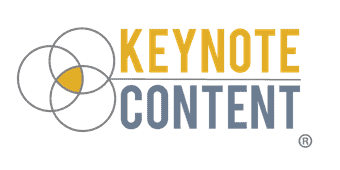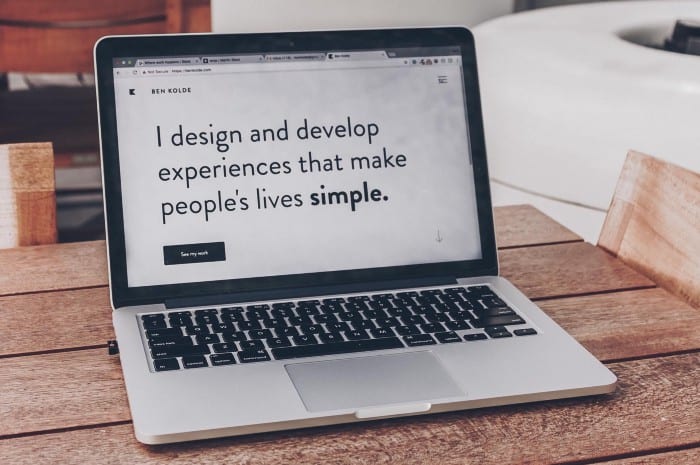Fact: if you’re not generating sales right now, it’s not your audience’s fault — it’s your offer’s fault.
“But, Jon, we’re in the middle of a global pandemic! Jon, we’re maybe starting one of the worst economic downturns in history!”
That’s come to my attention.
Your audience is more skeptical than maybe any other time before now. Even decent offers — digital courses, books, coaching, training, done-for-you services — are falling on deaf ears without the right alignment with your audience. How you’re presenting your offer, specifically through your sales copy, isn’t alleviating their skepticism or objections.
The answer? Better sales copy — at least for your sales pages — because frankly, your copy likely stinks. At the very least, it’s underperforming. You wouldn’t be reading this if your sales page was an ATM.
Here’s the good news: it’s easier than it may seem to turn underperforming sales pages into moolah-makers. How would I know? I wrote 2.3 million words of copy over the past eight years working one-on-one with over 1,100 of the top speakers, coaches, and experts in over 40 industries. So, yes, it’s possible and it all comes down to objections.
A consistent challenge I’m hearing from across virtually every industry during this COVID-19 crisis is how to overcome buyers’ objections. How can you identify what your ideal prospect might be skeptical of when it comes to your offer? More importantly, how do you then address those objections in your sales copy?
There are six different objections your audience is likely facing before they whip out their wallets and gave you their hard-earned money. I focus on each different objection in a specific question that drives how I write sales copy, develop digital products, and even do market research ahead of time. Fasten your seatbelt and on to question one…
01. Is this the right solution?
Let’s use “solution” and “offer” in a fairly synonymous way — at least for now. Any offer you make to your audience needs to be packaged as a solution to a specific problem. If an idea doesn’t solve an exact problem, then hold off on making an offer.
Spoiler alert: the best solutions come from those who understand the problem better than anyone else. As painstakingly obvious as that is, the reality is most coaches, speakers, and experts fail to master this step. You have to understand the problem at an expert level before you can offer an expert-level solution.
What if you already have a great solution but it’s not flying off the shelves? It’s likely because your solution isn’t clearly tied to the right problem. Many times a good offer doesn’t start as a good offer because it’s not presented with its full value. It’s not undeniably clear what problem the offer can solve for the potential purchaser.
Start with simple questions: What’s wrong? Why does it matter? How exactly does the problem affect your audience physically, emotionally, mentally, relationally, even spiritually?
Understand the exact problem first and then connect your solution to the exact problem using your sales copy. Go into detail about what the problem is your audience is facing, the disruption and angst that problem is causing in their lives, and then, on center stage with the solo light: your solution.
02. Is this part of the right process?
This may be one of the biggest objections throughout the entire client journey experience. Anyone can create a product or make an offer. Anyone can buy a digital product or service from you. It takes true foresight to create a context, a process, that shows why and where a specific offer exists in your client’s journey with you.
The right process proves you have a plan of action, a plan designed for their ultimate success. What’s next after they complete your course, finish your book, or do the final coaching session? How does that all fit on the journey you can take them on with your expertise? What can your prospect or client expect to see, hear, and do with you that will guide their future toward success?
Back when people used to go to malls there was this information kiosk with a map of the mall. It had a gold star that shows, “You are here.” Then, you could figure out the best pathway to go where you wanted to get what you wanted.
Your audience needs the same type of “You are here” starting point with a full map of where you’d like to take them next. And then, they need benchmarks to see how they can track their progress along the way.
If you’d like to get better results with your message, take the first step here.
03. How does my audience know I’m the right expert to offer this solution?
Even if you have the right solution, you need to consider, “Am I presenting myself as a trustworthy expert with the right solution?” If you’re offering a weight loss solution and you look out of shape or uninspiring, your offer will be inconsistent with your expertise.
When someone comes to your website, your sales page, or watches your presentation, how can you clearly demonstrate you have the expertise, education (self or traditional), and most importantly, results to prove your credibility. Overcoming this objection of expertise happens by including details like testimonials (video testimonials are the best), case studies, screenshots of your stats, education degrees, and user ratings.
04. Is this the right time for this offer?
If the past few months taught us anything when it comes to marketing, it taught us that there is a right time to share an offer…and a wrong time.
A number of our clients started experiencing negative comments and rankings on their ads. Who are they? Travel influencers, live event coordinators, political staff, medical experts. Nobody was traveling, going to live events, wanting to hear anything political, or listen to another medical expert share anything non-COVID-19 related. Our clients’ ads were still running (not our call), but their marketplace is now nonexistent or not interested at this time. Hence, the negative comments because their ads now seemed tone-deaf.
Of course, this is an extreme situation with a global pandemic and far overdue racial justice change, but even under ‘normal’ circumstances, the timing of your offer is crucial:
- If it’s an online course, how long can someone expect to take to complete the course? If it seems like they’ll only get a module a week for 12 weeks, that’s hard to digest since most people want to set their own pace with online learning.
- If it’s a coaching program, you may have difficulty offering your group coaching sessions at 9:00 a.m. if your coaching clients aren’t in charge of their work schedules.
You need to adjust your sales copy to address the objections your audience may have when it comes to the timing of your offer. Is now the right time? If the timing matters more now than ever, how can you articulate that belief? If it’s the right time, does this offer have the right time expectations? How long will this take someone to complete? Is that a reasonable timeline?
05. Is this the right delivery method?
What’s your personality style? If you’re not comfortable at all on camera, doing a video-based course may not be the right delivery method. If you struggle with writing, you may need someone else to transcribe your ideas into written content.
What’s your audience’s preferred way of consuming content and engaging with your expertise? It’s different for every industry:
- Asking a business executive to do a two-hour coaching session for 12 consecutive weeks is a difficult request because their time is far more in-demand that most of the population.
- Reaching an audience of drivers, commuters, or on-the-go professionals means relying on written content isn’t a great idea. Audio content is probably best because you don’t require your audience to see your content to transfer knowledge.
- If you’re wanting to reach first-time moms, it’s far better to offer a digital course with a community attached, such as a Facebook group, instead of presenting your content as a live webinar.
Your sales copy can address the delivery method objection by showing you understand your audience’s availability, preferred communication style, and how they want you to show up in their inboxes and newsfeeds.
If you’d like to get better results with your message, take the first step here.
06. Is the perceived level of value accurate?
This is probably the most deceptive part of buyer objections. The amount of money changing hands is directly tied to the perceived amount of value offered in exchange.
So many sales pages place a lot of emphasis on the price point of an offer — $1,000 for an online course, $10,000 for a coaching program, $20 for a book, etc. — without first communicating the exact value of the offer. Think of four levels when it comes to your sales copy…
Level 1 — Features: “Build a $1M Sales Machine In Less Than 30 Days has 12 ground-breaking sales strategy video modules guiding you through the in’s-and-out’s of a profitable, scalable sales system.”
Most sales copy I’ve seen focuses on what’s included, but knowing there are videos in a course isn’t unique. It’s not obvious the value of the videos. So, in this example, we need to go beyond just mentioning the videos and focus on the benefits of the videos.
Level 2 — Benefits: “…so you can know the exact processes and steps to unlock $1M+ success in your business.”
This answers the questions, “So, what’s in it for me?” or “So I can what?” There needs to be a clear purpose and definite value ascribed to each video. What’s the point and why does it matter?
Level 3 — Status: “Go from Living Month-to-Month as an Entrepreneur to Millionaire-Plus Success with Build a $1M Sales Machine In Less Than 30 Days.”
In this hypothetical situation, your prospective buyer might recognize they’re struggling to make payroll, get momentum with their business, and maybe even feel like a failure. For some, they are failing. Show that your course can change their status from “I’m a struggling entrepreneur…” to “I’m a millionaire success from my own blood, sweat, and tears as an entrepreneur!”
Level 4 — Emotional Narrative: “Be the envy of every other entrepreneur you know, including your family.”
This is the deepest level of perceived value because we all tell ourselves stories. “I’ll never be good at business.” “I’m just the guy who doesn’t deserve a great relationship.” “I guess I’m just the don’t-have-it-together Mom…” They’re not all bad stories — but your sales copy is about elevating their status in their own stories, not just in the eyes of others.
Show that your offer, no matter what it is, can deliver that level of value, and you will automatically see an increase in engagement and sales. Unless the perceived value outweighs the financial investment level, you will not generate nearly as many sales. Most importantly, without that transformation, your Message will fail to make nearly as big of an impact in the world.
Set expectations and eliminate these different objections in your sales copy. It will strengthen your offer and drive more sales. And, you’ll enjoy quite a bit more meaningful moolah in your business.
If you’d like to get better results with your message, take the first step here.

